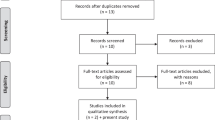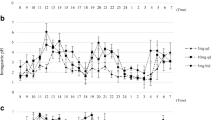Abstract
A proton pump inhibitor (PPI) plus two antibiotics (amoxicillin and either clarithromycin or metronidazole) are recommended for treatment of acid-related disorders with Helicobacter pylori (H. pylori) infection. The aim of this pharmacogenetic study was to evaluate the efficacy of triple therapy with PPIs on eradication of H. pylori infection in relation to cytochrome P450 2C19 (CYP2C19) and P-glycoprotein (MDR1) gene polymorphisms. The retrospective study involved 70 Polish Caucasian patients with H. pylori infection, diagnosed and treated with one of the two different triple therapy regimens [omeprazole, amoxicillin, and clarithromycin (OAC) or pantoprazole, amoxicillin, and metronidazole (PAM)]. Using genomic DNA, CYP2C19 (*2 and *3) and C3435T MDR1 alleles were determined by means of polymerase chain reaction-restriction fragment length polymorphism assays. A significantly higher prevalence (P<0.05) of heterozygous extensive metabolizers (hetEM) with CYP2C19*1/*2 genotype (32.4% versus 8.3%) and homozygous with 3435TT MDR1 genotype (38.2% versus 13.9%) was found in patients cured after the first cycle of triple therapy than in patients with failure of eradication after the first cycle. CYP2C19*1/*2 and 3435TT MDR1 genotypes as well as PAM regimen of treatment were also predictive of successful eradication of H. pylori infection after the first cycle of triple therapy at univariate/multivariate logistic regression analysis. This pharmacogenetic study on the influence of different CYP2C19 and C3435T MDR1 genotypes on H. pylori eradication suggests that CYP2C19 and MDR1 polymorphisms may be independent predictable determinants of the efficacy of triple therapy including PPI. The PAM regimen of treatment seems to be more effective after the first cycle of the therapy than the OAC regimen.
Similar content being viewed by others
References
International Agency for Research on Cancer, World Health Organization (1994) Infection with Helicobacter pylori. In: Schistosomes, liver flukes and Helicobacter pylori. IARC, Lyon, pp 177–202
Soll AH (1996) Consensus conference. Medical treatment of peptic ulcer disease. Practice guidelines. Practice Parameters Committee of the American College of Gastroenterology [review]. JAMA 275:622–629
Malfertheiner P, Megraund F, Morain CO et al (2002) Current concepts in the management of Helicobacter pylori infection. The Maastricht 2–2000 Consensus Report. Alim Pharmacol Ther 16:167–180
Janssen MJR, Van Oijen AHAM, Verbeek ALM et al (2001) A systematic comparison of triple therapies for treatment of Helicobacter pylori infection with proton pump inhibitor/ranitidine bismuth citrate plus clarithromycin and either amoxicillin or a nitromidazole. Aliment Pharmacol Ther 15:613–624
Stedman CA, Barclay ML (2000) Review article: comparison of pharmacokinetics, acid suppression and efficacy of proton pump inhibitors. Aliment Pharmacol Ther 14:963–978
Guengerich FP (1999) Cytochrome P-450 3A4: regulation and role in drug metabolism. Annu Rev Pharmacol Toxicol 39:1–17
Wedlund PJ (2000) The CYP2C19 enzyme polymorphism. Pharmacology 61:174–183
Sapone A, Vaira D, Trespidi S et al (2003) The clinical role of cytochrome P450 genotypes in Helicobacter pylori management. Am J Gastroenterol 98:1010–1015
Pauli-Magnus Ch, Rekersbrink S, Klotz U, Fromm MF (2001) Interaction of omeprazole, lansoprazole and pantoprazole with P-glycoprotein. Naunyn-Schmiedeberg’s. Arch Pharmacol 364:551–557
Gottesman MM, Pastan I (1993) Biochemistry of multidrug resistance mediated by the multidrug transporter. Ann Rev Biochem 62:385–427
Wakasungi H, Yano I, Ito T et al (1998) Effect of clarithromycin on renal excretion of digoxin: interaction with P-glycoprotein. Clin Pharmacol Ther 64:123–128
Wang L, Kitaichi K, Hui CS et al (2000) Reversal of anticancer drug resistance by macrolide antibiotics in vitro and in vivo. Clin Exp Pharmacol Physiol 27:587–593
Chiou WL, Chung SM, Wu TC (2000) Potential role of P-glycoprotein in affecting hepatic metabolism of drugs. Pharm Res 17:903–905
Hoffmeyer S, Burk O, von Richter O et al (2000) Functional polymorphisms of the human multidrug-resistance gene: multiple sequence variations and correlation of one allele with P-glycoprotein expression and activity in vivo. Proc Natl Acad Sci USA 97:3473–3478
Cascorbi I, Gerloff T, Johne A et al (2001) Frequency of single nucleotide polymorphisms in the P-glycoprotein drug transporter MDR1 gene in white subjects. Clin Pharmacol Ther 69:169–174
Siegmund W, Ludwig K, Giessmann T et al (2002) The effects of the human MDR1 genotype on the expression of duodenal P-glycoprotein and disposition of the probe drug talinolol. Clin Pharmacol Ther 72:572–583
Haas CE, Lahiri DK, Bye S, Nurnberger JI Jr (1992) A non-organic and non-enzymatic extraction method gives higher yields of genomic DNA from whole-blood samples that do nine other methods tested. J Biochem Biophys Met 25:193–205
Goldstein JA, Blaisdell J (1996) Genetic tests which identify the principal defects in CYP2C19 responsible for the polymorphism in mephenytoin metabolism. Methods Enzymol 272:210–217
De Morais SM, Wilkinson GR, Blaisdell J et al (1994) Identification of new genetic defect responsible for the polymorphism of (S)-mephenytoin metabolism in Japanese. Mol Pharmacol 46:594–598
Bertilsson L (1995) Geographical/interracial differences in polymorphic drug oxidation. Clin Pharmacokinet 29:192–209
Goldstein JA, Ishizaki T, Chiba K et al (1997) Frequencies of the defective CYP2C19 alleles responsible for the mephenytoin poor metabolizer phenotype in various Oriental, Caucasian, Saudi Arabian and American Black populations. Pharmacogenetics 7:59–64
Meyer UA (1996) Interaction of proton pump inhibitors with cytochromes P450: consequences for drug interactions. Yale J Biol Med 69:203–209
Meyer UA (1996) Metabolic interactions of the proton-pump inhibitors lansoprazole, omeprazole and pantoprazole with other drugs. Eur J Gastroenterol Hepatol 8:S21–S25
Furuta T, Shirai N, Xiao F et al (2001) Effect of high-dose lansoprazole on intragastric pH in subjects who are homozygous extensive metabolizers of cytochrome P4502C19. Clin Pharmacol Ther 70:484–492
Furuta T, Shirai N, Takashima M et al (2001) Effect of genotypic differences in CYP2C19 on cure rates for Helicobacter pylori infection by triple therapy with a proton pump inhibitor, amoxicillin and clarithromycin. Clin Pharmacol Ther 69:158–168
Furuta T, Shirai N, Watanabe F et al (2002) Effect of cytochrome P4502C19 genotypic differences on cure rates for gastroesophageal reflux disease by lansoprazole. Clin Pharmacol Ther 72:453–460
Shimatani T, Inoue M, Kuroiva T et al (2003) Effect of omeprazole 10 mg on intragastric pH in three different CYP2C19 genotypes, compared with omeprazole 20 mg and lafutidine 20 mg, a new H2-receptor antagonist. Aliment Pharmacol Ther 18:1149–1157
Tanigawara Y, Aoyama N, Kita T et al (1999) CYP2C19 genotype-related efficacy of omeprazole for the treatment of infection caused by Helicobacter pylori. Clin Pharmacol Ther 66:528–534
Furuta T, Takashima M, Shirai N et al (2000) Cure of refractory duodenal ulcer and infection caused by Helicobacter pylori by high doses of omeprazole and amoxicillin in a homozygous CYP2C19 extensive metabolizer patient. Clin Pharmacol Ther 67:684–689
Kawabata H, Habu Y, Tomioka H et al (2003) Effect of different proton pump inhibitors, differences in CYP2C19 genotype and antibiotic resistance on the eradication rate of Helicobacter pylori infection by a 1-week regimen of proton pump inhibitor, amoxicillin and clarithromycin. Aliment Pharmacol Ther 17:259–264
Inaba T, Mizuno M, Kawai K et al (2002) Randomized open trial for comparison of proton pump inhibitors in triple therapy for Helicobacter pylori infection in relation to CYP2C19 genotype. J Gastroenterol Hepatol 17:748–753
Aoyama N et al (2002) Optimal dose of omeprazole for CYP2C19 extensive metabolizers in anti-it Helicobacter pylori therapy: pharmacokinetic considerations. Biol Pharm Bull 25:923–927
Author information
Authors and Affiliations
Corresponding author
Rights and permissions
About this article
Cite this article
Gawrońska-Szklarz, B., Wrześniewska, J., Starzyńska, T. et al. Effect of CYP2C19 and MDR1 polymorphisms on cure rate in patients with acid-related disorders with Helicobacter pylori infection. Eur J Clin Pharmacol 61, 375–379 (2005). https://doi.org/10.1007/s00228-005-0901-1
Received:
Accepted:
Published:
Issue Date:
DOI: https://doi.org/10.1007/s00228-005-0901-1




